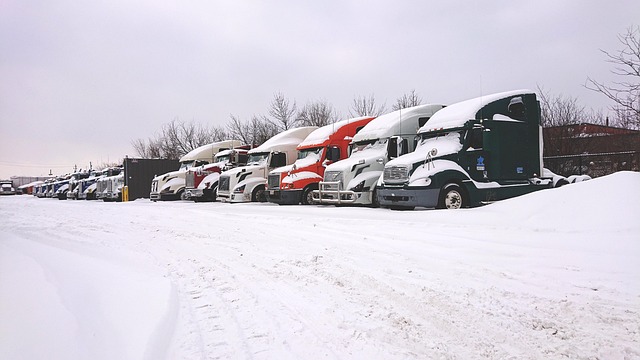Looking to register your car in California? This guide walks you through the process, ensuring a smooth transition. From understanding key requirements to completing essential paperwork like VIN verification, we’ve got you covered. Learn how to select the right location at the California Motor Vehicle Registry and submit your application with ease. By following these steps, you’ll be on your way to legal vehicle registration in no time, avoiding any potential delays or issues.
- Understand California Car Registration Requirements
- Gather Necessary Documents for VIN Verification
- Perform Vehicle Identification Number (VIN) Check
- Select a California Motor Vehicle Registry Location
- Submit Application and Pay Fees for Registration
Understand California Car Registration Requirements

Before registering your car in California, it’s crucial to understand the state’s specific requirements for vehicle identification number (VIN) verification. The California Department of Motor Vehicles (DMV) mandates a rigorous process to ensure the accuracy and authenticity of all registered vehicles. This includes verifying the VIN, which is a unique identifier for each car, to combat theft and fraudulent registration.
One efficient way to complete this step is through mobile VIN verification services. These services offer convenient, on-demand inspections using advanced technology. A mobile VIN verifier can swiftly cross-reference your vehicle’s details with state databases, ensuring compliance before you submit your registration application. This modern approach saves time and effort, making it a popular option for California residents looking to streamline their car registration process.
Gather Necessary Documents for VIN Verification

To register your car in California, you’ll need to undergo a Vehicle Identification Number (VIN) verification process. This involves gathering essential documents that prove the vehicle’s history and authenticity. Before heading to the DMV, make sure you have all required paperwork ready. This includes the vehicle’s title, registration certificate, and proof of insurance. Additionally, you will require a valid driver’s license or state-issued ID card.
For a smoother process, consider using a mobile vin verifier or performing a vin inspection yourself. These services can help ensure that your vehicle’s information is accurate and up-to-date. Having these documents readily available will expedite the registration process, so be sure to organize them in advance.
Perform Vehicle Identification Number (VIN) Check

Before registering your car in California, performing a Vehicle Identification Number (VIN) check is an essential step. This process involves verifying the vehicle’s history and ensuring it meets all legal requirements for registration. You can conduct a VIN verification through various official channels, including mobile vin inspection services that come to you. These mobile vin verifier options are convenient, saving you time and effort by allowing you to complete the check from the comfort of your home or garage.
During a VIN verification, you’ll need to access your vehicle’s unique 17-character VIN number, which can typically be found on the registration card, insurance policy, or under the windshield. The information retrieved through this process will reveal crucial details about the car’s past, including ownership history, accident reports, and any outstanding issues that could impact its registration status in California. By ensuring your vehicle passes this mobile vin inspection, you’re taking a significant step towards a smooth registration process.
Select a California Motor Vehicle Registry Location

When registering your car in California, choosing the right location for your vehicle’s inspection is essential. The state offers several options to streamline the process, including a range of California Motor Vehicle Registry (DMV) offices and even mobile vin verification services. If you prefer convenience and flexibility, consider using a mobile vin verifier or scheduling an inspection at a DMV that provides these services. This way, you can avoid long lines and potential delays by having your vehicle’s history and details verified on-site.
For those looking for direct access to official services, visiting a local DMV office is a reliable choice. Here, you can complete registration forms, provide necessary documents, and undergo a vin inspection, which is crucial for verifying the vehicle’s identity and ensuring it meets California’s safety standards. Whether you opt for traditional or mobile vin verification, understanding these steps will make the car registration process in California smoother and more efficient.
Submit Application and Pay Fees for Registration

After gathering all the necessary documents, it’s time to submit your application for vehicle registration. You can do this online or in person at a California Department of Motor Vehicles (DMV) office. The process involves filling out the appropriate forms and providing proof of insurance, ownership, and identity. One crucial step is the vin verification, which ensures the accuracy of your vehicle’s unique identifier.
To streamline the process, consider opting for a mobile vin inspection or mobile vin verification. These services allow you to have your vehicle’s VIN checked by a professional who can visit you at your convenience. This method not only saves you time but also ensures that all the necessary details are correctly recorded during registration, making the entire experience smoother and more efficient.
Registering a car in California is a straightforward process once you understand the requirements and have the necessary documents. After completing the VIN verification, selecting a nearby Motor Vehicle Registry location, and submitting your application with the required fees, your vehicle will be officially registered within the state. Remember to keep your registration up-to-date for smooth driving experiences.
